I have been racing bikes since my early teens. Cycling is a really fun sport, but having suffered no less than three concussions crashing in criterium racing, and also having been hit twice by cars while training, I have moved away from the sport a bit. I tried triathlons, but don’t like swimming enough to put in the effort for training (and driving to a pool all the time, driving bad!). So I settled on Duathlon. It is a run -> bike -> run (two runs, but about 50/50 balance on effort overall between running and cycling) event. Running is a simple sport, easy to do while traveling, and it’s major downside, various overuse injuries, is generally minimized when longer workouts are done on the bike (often indoors, for me). The transitions between sports add a bit of a skill component to an otherwise aerobic endurance competition, which is nice too. The standard duathlon is also a draft-illegal event, so aerodynamics is king on the bike, adding a scientific challenge to the mix (it is sometimes argued that the aerodynamics is a how-rich-you-are competition, but I don’t think that is entirely true, an old used TT bike with cheaper components and chinese wheels and a good skinsuit can be made as aero as the latest superbike with the latest gadgets, most of which don’t really do that much).
I am a very good athlete (I have Strava KOMs all over the world, and I won a few Cat 1 amateur road races in my day), but not a true world class athlete (unlike my sister who was an Olympic medalist on the velodrome, incidentally she passed on a lot of aerodynamics knowledge I still rely on). Duathlon is not the most competitive sport and so at Nationals I won my age group the last two years, but I still can’t win the overall. To be fair, there is no drug testing in this sport, and I have my suspicions about the 53 year old and the 58 year old who beat me this year in the standard duathlon, but the ~36 year old types who beat me likely were just better than me. Which is the long way of saying that I am doing a lot of this more for fun than for the potential of any real glory. I am 28 going on 29 years old, and my run at the (age group) World Championships in Duathlon this year is essentially meant to push myself to the highest peak while I still can, to see what my all time PR can be, before I start getting old.
As part of my PR plan, I traveled to the A2 Wind Tunnel in Charlotte, North Carolina. Wind tunnels are fancy places where you can test your aerodynamic set up on a bike (also cars, planes, etc). Charlotte, rather like Minneapolis which I come from, is one of those big cities in the US (~3 million people) which people have vaguely heard of but don’t really know what they are like. I flew into Asheville, NC and had a lovely little vacation out of it. I managed to see bears twice (2 cubs and a mama, then later just one cub) while hiking in the Great Smoky Mountains, enjoyed the gardens of Biltmore Estate, and had a ton of fun rafting, climbing, and jumping off towers at the US National Whitewater Center near Charlotte. I disliked Gatlinburg/Pigeon Forge but some people might like that too. The wind tunnel cost me $2000 for 3 hours of time (arrive early to get set up) and it was a pretty exhausting experience (although I thought it was immense fun regardless). 3 hours seems the sweet spot, enough time to run a good number of tests, but any longer and you are too tired to continue efficiently. My main goals coming in were to test running shoes vs cycling shoes, tune my fit, and test some of my experimental gadgets.
I am just a tad under 6 feet tall, and weigh something like 79 kg.
Main Conclusions:
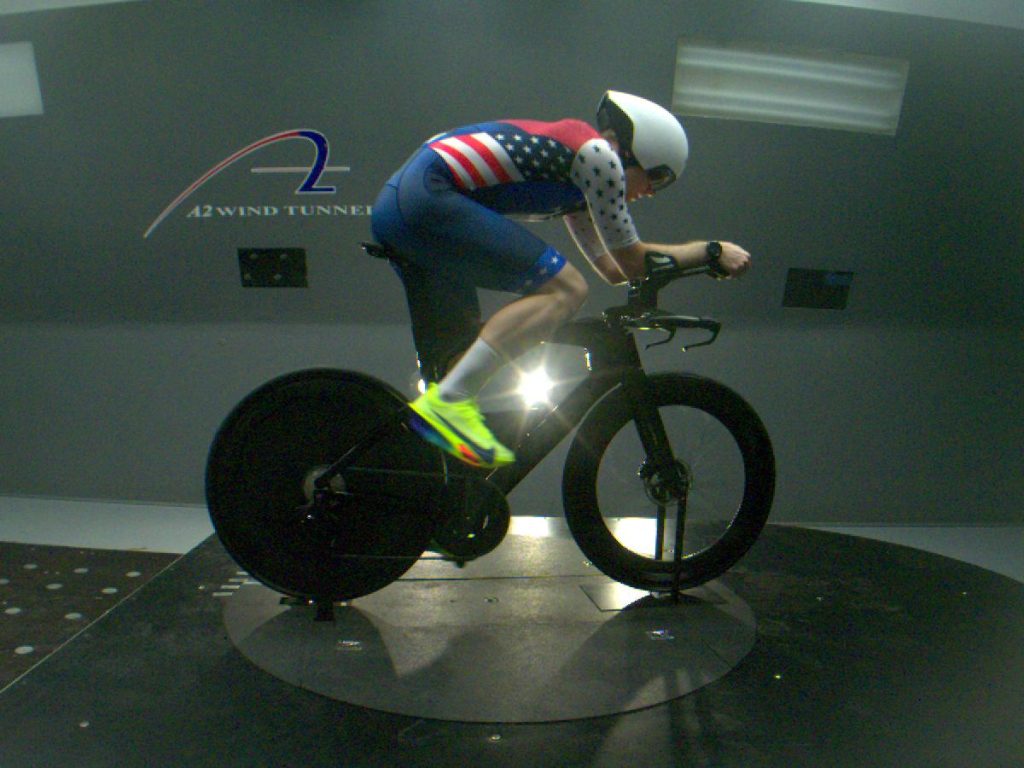
One of my biggest questions for duathlon has been, should I race in flat pedals with running shoes, instead of needing to switch between running shoes and cycling shoes (which happens twice per race. in duathlon). Not switching saves valuable time. Running shoes are just as mechanically efficient in most lab studies on steady state efforts on a bike (they’ve got carbon plates now too), where you can also go a bit faster into and from transition on running shoes, and where not bending over to switch shoes keeps blood from rushing to your head. But are these big shoes going to slow me down a lot on the bike through drag?
The use of flat pedals and running shoes increased drag noticeably versus aero road cycling shoes and pedals (cda from 0.245/0.249 to 0.255 at 0 yaw, or about 5.1 to 8.2 watts at 25 mph which is about 30 seconds on a 40 km time trial around 40 kmh). Nike Alphafly Gen 1 (pointy heel, the only shoe I’ve found any articles to suggest had some CFD design applied to their design) were a tiny bit faster (1.3 watts) than Gen 3 alphafly (rounded heel). Note that this was a speedplay aero and laced shoes setup (among the most aero road shoe setups) versus some of the biggest, chunkiest running shoes, and so a regular road cycling shoe with boas and with Shimano SPD pedals versus a thinner road running shoe would be a much tighter difference. I am thinking… Flat pedals + running shoes win out for standard duathlon but it’s pretty close. For sprint duathlon (draft legal especially), flat shoes are a no-brainer, definitely use them. Note also that big shoes like the alphafly require a higher seat position for the bike, which can sometimes lead to an improved aero position (much like the argument for shorter crank arms).
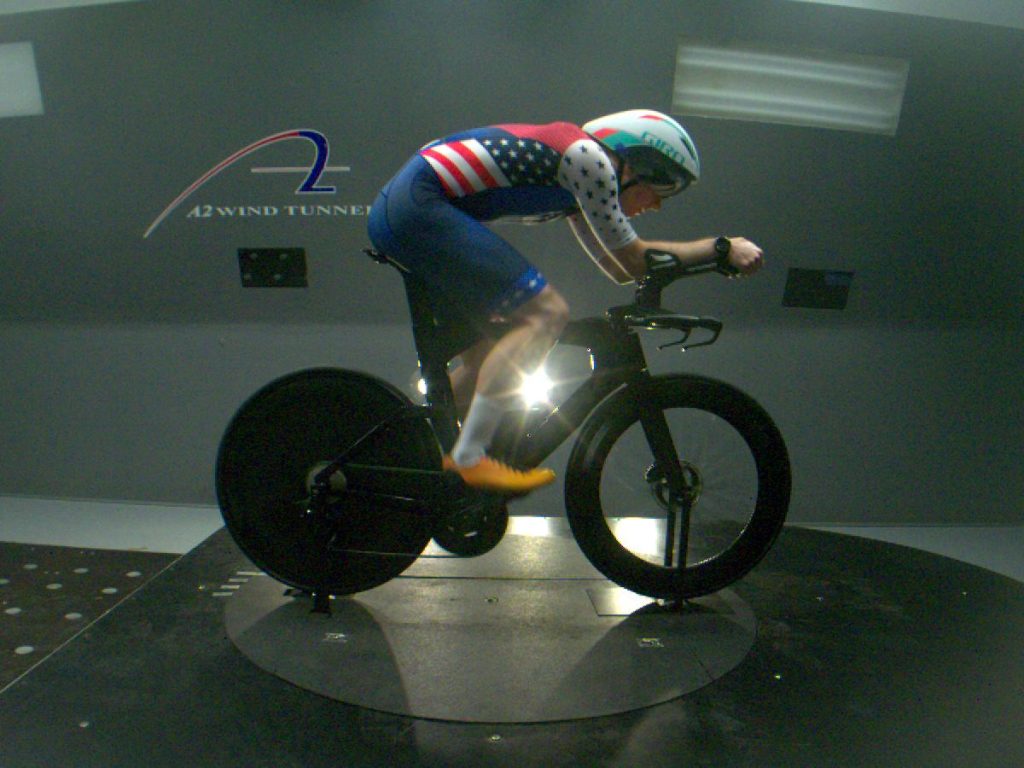
POC Procen was much faster for me than the Giro Aerohead (the aero benchmark of helmets, 7 watt slower at the biggest difference, which was at 7.5 yaw) or Giro Selector (long tailed). Note that my POC Procen was hand painted white (I am big on white in sports as it significantly reduces heat absorption on sunny days) which added surface roughness to the helmet which may have helped improve performance a bit (possibly keeping the boundary layer better attached, a bit like the golf ball thing).
Between the Arm (BTA) Bottle was helpful. It also gives you a way to drink water while staying in the aero bars. It’s just not UCI legal, where that matters. This also wouldn’t work with the narrowest of arm positions, which could be a penalty for some people.
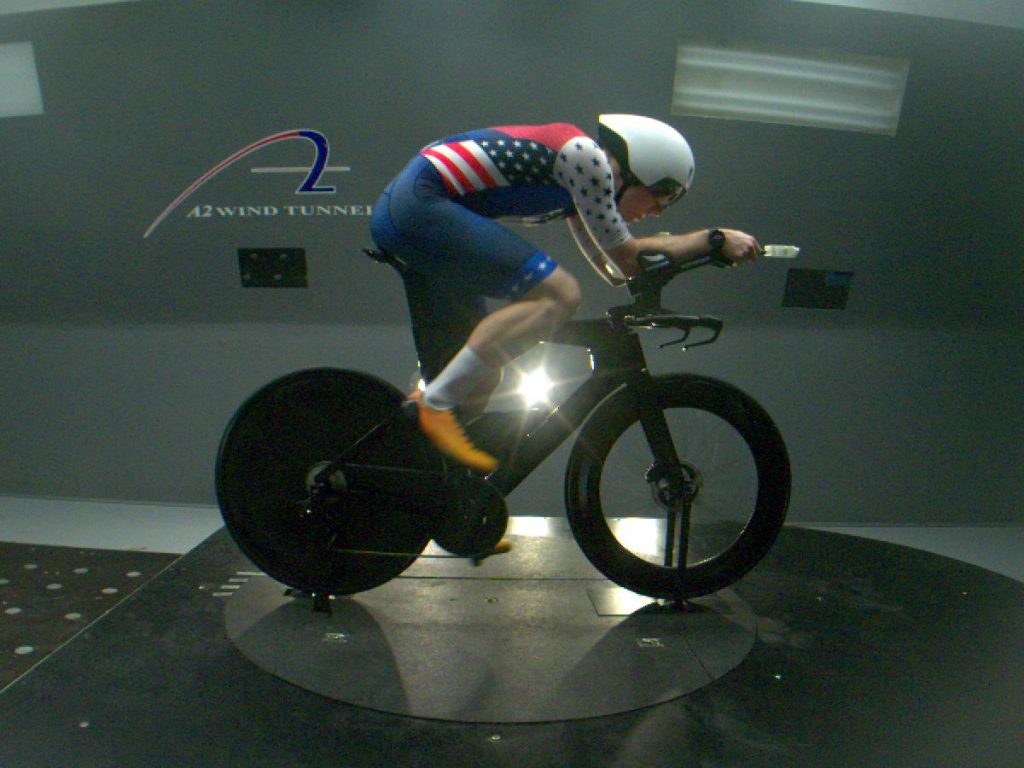
My prototype aero sensor I am working on actually improved aerodynamics a little, despite being the size of a hockey puck. Likely this is due to it being in front of my hands, which were in front of my helmet, generally extending that shape out.
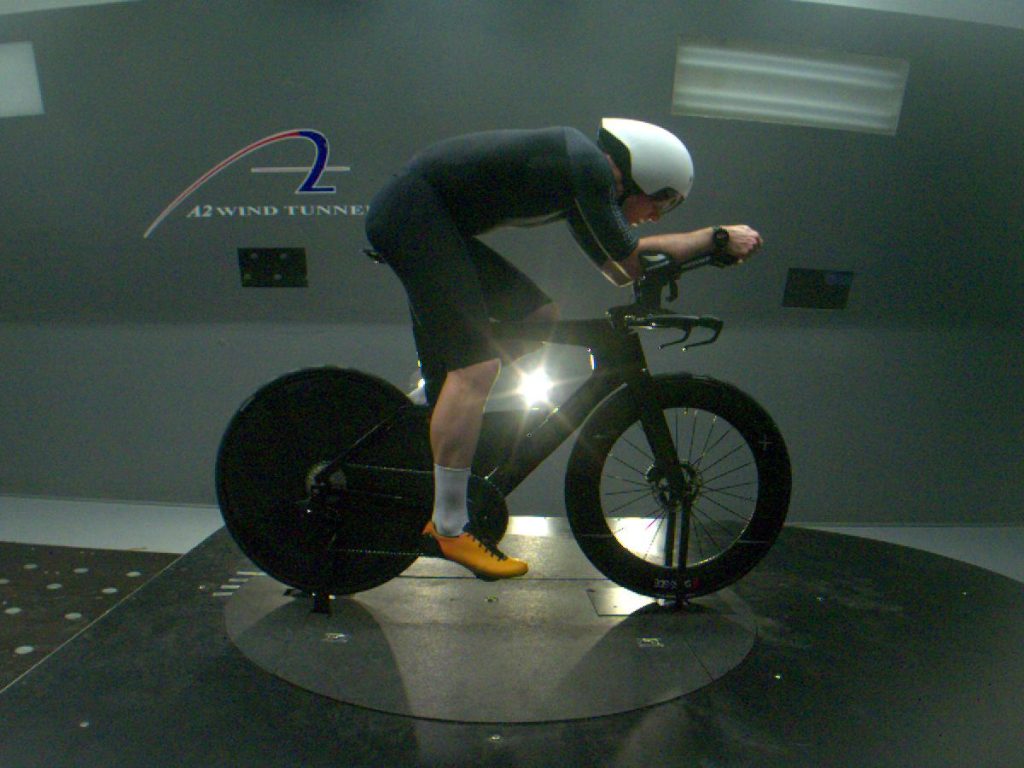
My HUUB (Anemoi 2 | 22PLUS Tri Suit Bonded) was much faster than the Zoot Aero Fz Race Suit. Note that while both were Mediums, the Zoot suit felt less tight. The Huub one actually had some wrinkling of excess fabric but it seems to have been mostly in locations (inside arms) where it wouldn’t matter as much. Meanwhile the Huub suit had nice long arms and legs and yet wasn’t baggy (fabric is faster, so you want longer arms/sleeves as long as they aren’t loose). I do believe this was the biggest gain of the day. It looks like the relevant baseline .243 (which isn’t fully comparable as my head was a bit higher) compared to 0.225. Even assuming the helmet account for 0.005 of that (it was probably less than that), that is still 0.13 CdA lower, which is quite a bit. As the body is the largest surface here, it is not surprising that such a large gain should be achieved. And I am stuck racing the slow Zoot one as that is required at Worlds. I will get a smaller size in that hopes that can help, but pretty clearly seeing the two, it is more than just size that makes the difference here.
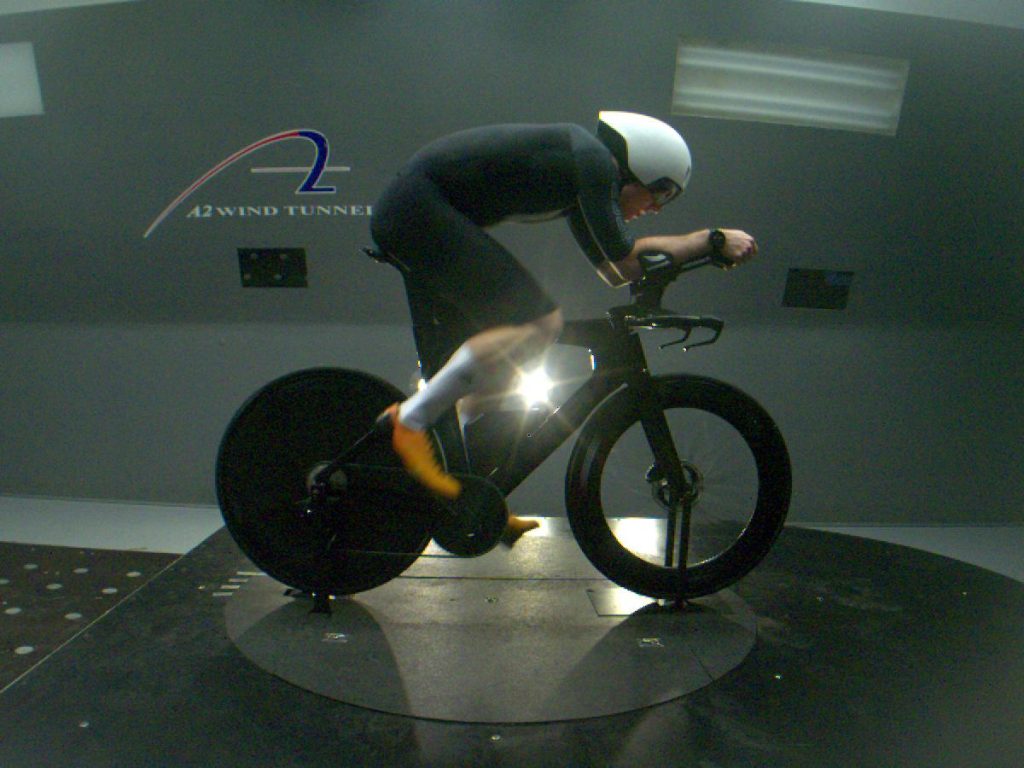
The Rule 28 socks appear to be a little slower than my Sockeloen 468 aero socks despite being a tiny bit higher. Note the Sockeloen so far have also been the most comfortable for me of the various aero socks I have tried, and stay up well when running, so glad to see that. 3 watts between aero socks does suggest it might be worth trying different aero socks, that’s about the same territory as most of the helmet switches.
These were my own Rule 28 socks but they actually had a big pile of Rule 28 stuff you could try on yourself at the wind tunnel, as well as way more aero helmets to try than I was expecting (I thought they had 10, but it looked like almost 50), and there might be some other manufacturer sent stuff there too.
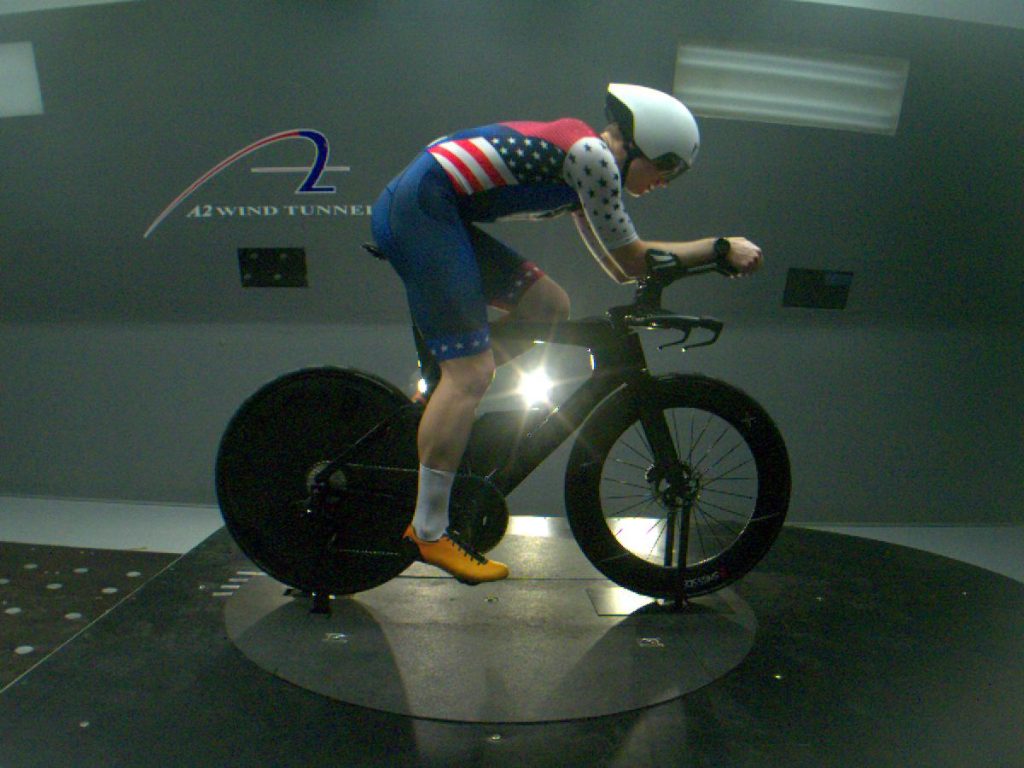
The aero coach really got obsessed about lower helmet position (helmet tucked down into neck) and it certainly looks better, but looking at the data, I am only seeing 0.005 CdA difference (I wonder if the coach briefly forget to factor in the change back to road shoes, as the comparison from the previous run was pretty big, but that was also running shoes run). That’s definitely a clear advantage, but 5 watts, we are not talking a ridiculous amount despite my head being way higher in the previous. Perhaps the POC Procen is more tolerant of higher head positions than other helmets would be?
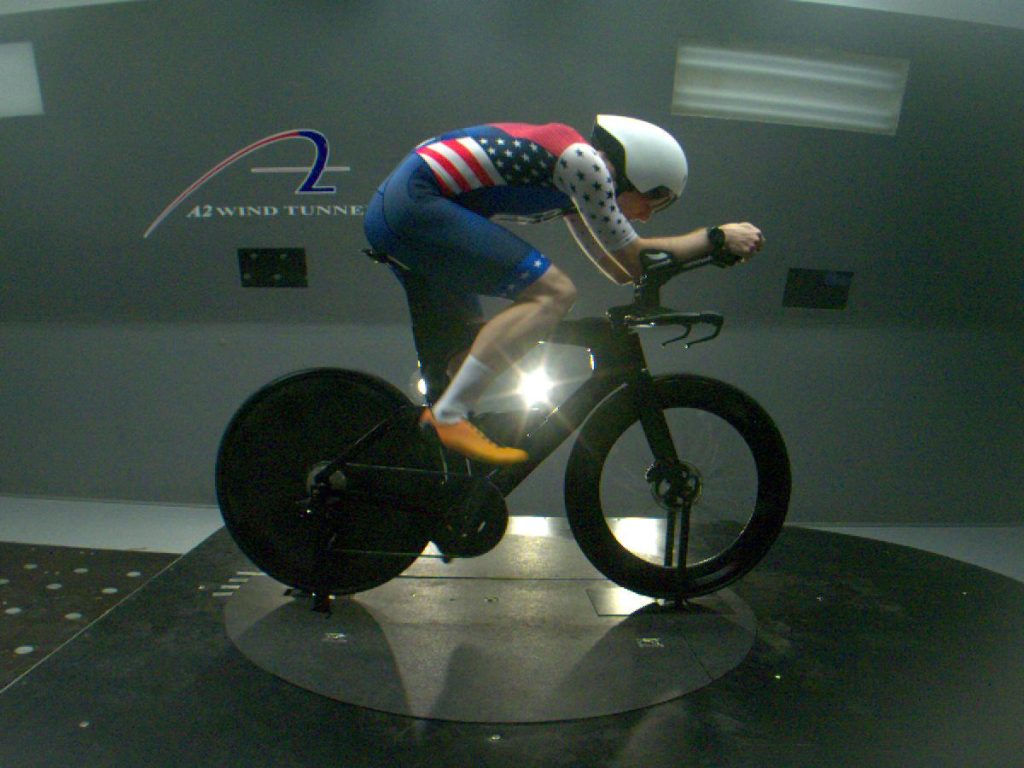
The most unclear thing, unfortunately, was where to put my aero bars and extensions. Most of the changes up a bit, down a bit, a bit more tilted, didn’t seem to make that much difference (all around .239 cda for that period). I am feeling that “whatever is most comfortable to keep my head down and allows me to generate the best power” is going to be the determinant on my position. Which is actually a nice freedom to have, I don’t have to worry about trying to hold that one most aero position regardless of sacrifice. Some things that did kinda seem to help based off starring at the side and front pictures vs results: head lower, arm holder “align wings” angled more parallel to the flow, phaser bar rotation correct. I did notice one bigger thing, my clearly best position run (run 13) is the only one where my nose is not in any way visible in the front view photo). So nose behind hands, that seems to be important: ie the most aero position is the one where my hands and helmet position most limit my vision (I’ve read chatter from World Tour pros to that effect too). Charming.
I suspect I could make my position a bit more aero (head a bit lower, shoulders a bit narrower), but I don’t see myself being able to do that very much and maintain a comfortable position where I can continue to output power.
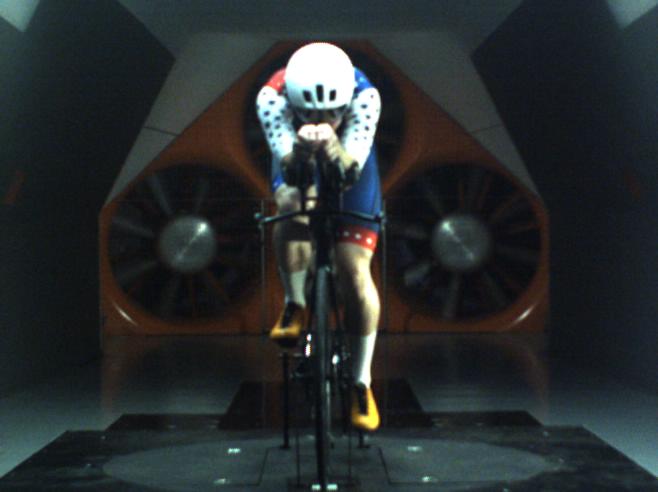
Note that my CdA of the final position was actually worse than my earlier position. We didn’t switch back for later runs as moving around the aerobar positions took a lot of (expensive in the wind tunnel) time. This shouldn’t matter as long as the correct baseline is used for each comparison.
The biggest challenge to reproducibility was keeping my helmet in a constant position. They had an outline drawn on the floor with a live camera image to guide me, but it was actually blocked from my view by my hands in the lowest helmet position. Results seem relatively reproducible, but not perfect as a result. They actually said I did a good job holding my position, until near the end when I started to get tired.
A suggestion I picked up was that adding rim tape between the tire and wheel should help a decent bit, but isn’t UCI legal (although they commented that my tire sizing already looked right).
I did not test shoe covers, calf guards, or any other tech that I didn’t think could be put on quickly in transition.
There is one test I am leaving out which I hope to post more about later…
Raw data attached below (original was macro enabled but that’s not considered web safe):
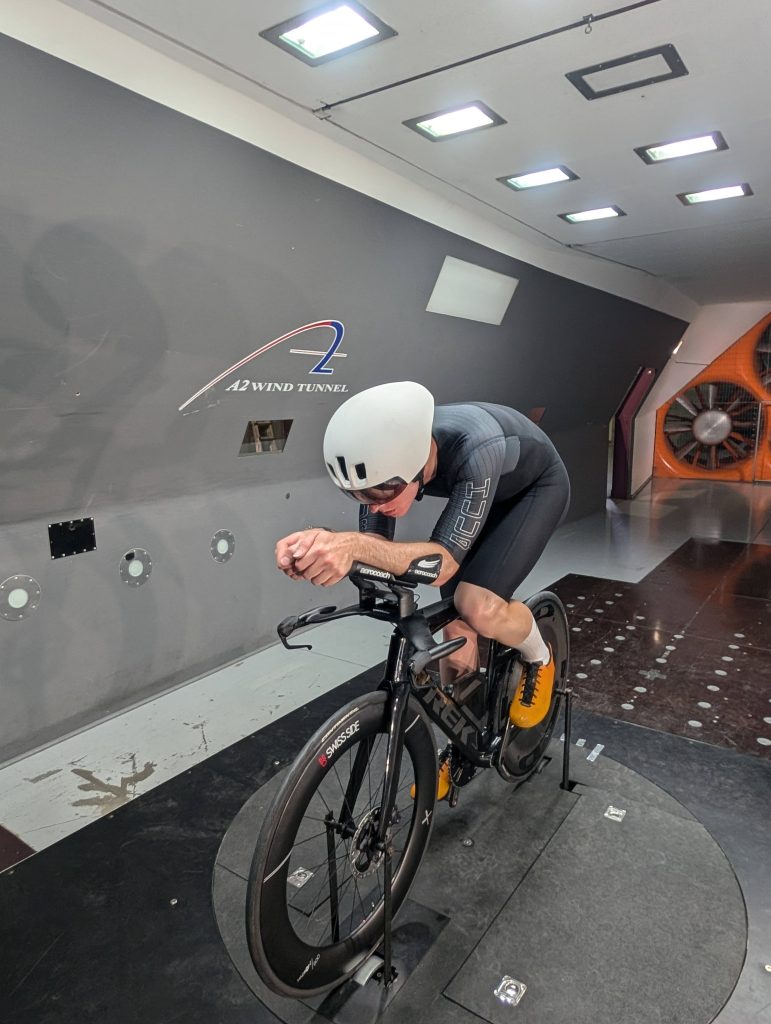

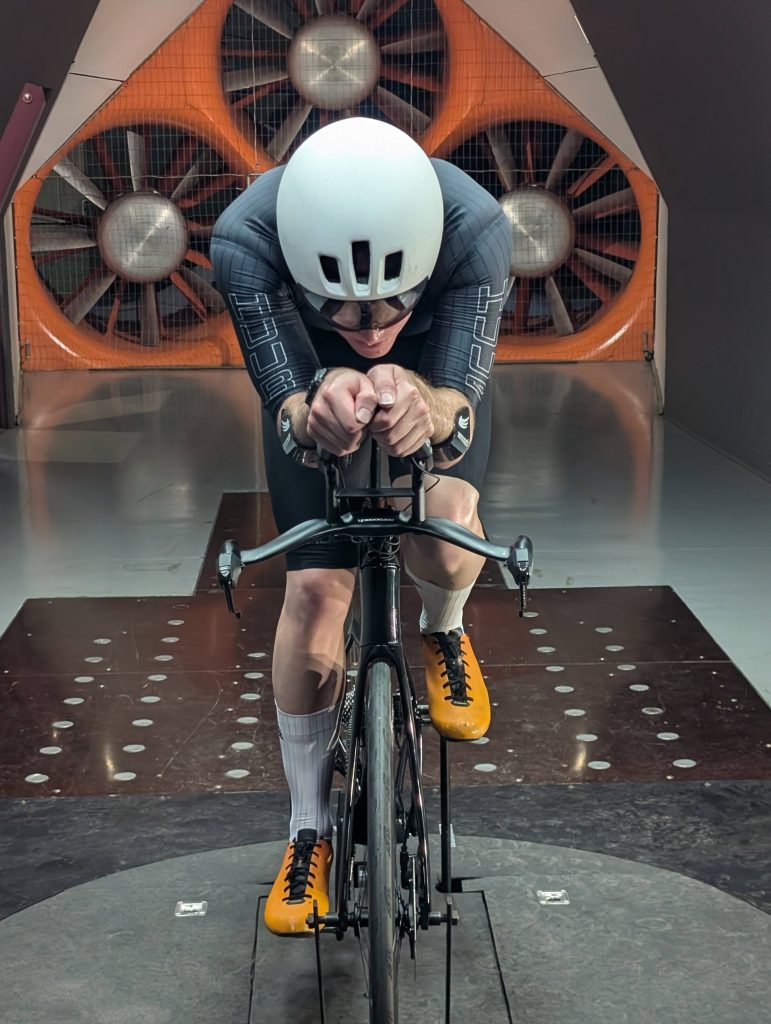
Hi Colin. Thanks for sharing all this. Question for ya. What does it mean to have rim tape between tire and wheel? Thanks!
Chris
Where the tire and the wheel meet, there is often a bit of a ‘divot’. If you applied tape (apparently Mavic briefly attempted to sell such a tape before the UCI banned it) to cover that gap, so going from the rim of the wheel to the ‘bulge’ of the tire, you can get a solid aerodynamic gain. Pretty easy to try, and safer to do with disc brake wheels than rim brakes.